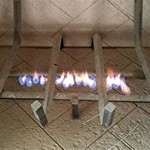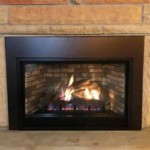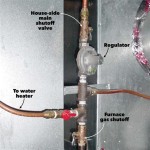```html
Ventless Propane Fireplace Heaters: A Comprehensive Overview
Ventless propane fireplace heaters offer a supplemental heating solution for residential and commercial spaces. Unlike traditional fireplaces requiring chimneys or venting systems, these appliances operate by burning propane fuel directly within the living space. This design characteristic contributes to their portability and ease of installation, rendering them a viable alternative for individuals seeking to enhance the warmth and ambiance of their homes without extensive renovations.
The operational principle of ventless propane fireplaces involves a controlled combustion process. These devices are engineered to burn propane with a high degree of efficiency, minimizing the production of byproducts such as carbon monoxide. The inclusion of an Oxygen Depletion Sensor (ODS) is crucial for safety. This sensor continuously monitors the oxygen levels in the room, and if the oxygen concentration falls below a pre-determined threshold, the ODS automatically shuts off the gas supply, preventing the accumulation of hazardous gases.
The market offers a diverse range of ventless propane fireplace heaters, varying in size, heating capacity, and aesthetic design. Models are available as freestanding units, wall-mounted options, and inserts designed to be placed within existing fireplace openings. The heating capacity, typically measured in British Thermal Units (BTUs), directly influences the area that the heater can effectively warm. Selecting a unit with an appropriate BTU rating is paramount for optimal performance and energy efficiency.
Key Advantages of Ventless Propane Fireplace Heaters
Ventless propane fireplace heaters present several advantages that contribute to their popularity as a supplemental heating source. These advantages include ease of installation, portability, and heating efficiency.
Ease of Installation: The absence of venting requirements greatly simplifies the installation process. Unlike vented fireplaces that necessitate the construction or modification of a chimney or flue, ventless propane heaters can be installed with minimal effort. This feature is particularly appealing to homeowners who are seeking a quick and cost-effective heating solution. The primary requirement for installation involves connecting the unit to a propane supply, which can be achieved through a portable propane tank or a connection to a natural gas line (with the appropriate conversion kit).
Portability: Many ventless propane fireplace heaters, especially freestanding models, offer a degree of portability that is not attainable with traditional fireplaces. These units can be easily moved from room to room, providing targeted heating wherever it is needed most. This portability makes them an ideal choice for individuals who want to supplement the heating in specific areas of their home, such as a living room, bedroom, or home office. The flexibility to relocate the heater also allows for optimal placement to maximize heat distribution and energy efficiency.
Heating Efficiency: Ventless propane fireplace heaters are generally more energy-efficient than vented models due to the absence of heat loss through a chimney or vent. Because the combustion byproducts are released directly into the room, the heat generated during the burning process is retained within the living space. This enhanced efficiency translates to lower heating costs and reduced energy consumption. However, it is essential to consider the proper size of the heater for the space to avoid overheating and ensure optimal comfort.
Safety Considerations for Ventless Propane Fireplace Heaters
While ventless propane fireplace heaters offer convenience and efficiency, adherence to safety guidelines is paramount for ensuring safe and trouble-free operation. Key safety considerations involve adequate ventilation, regular maintenance, and adherence to manufacturer's instructions.
Adequate Ventilation: Despite the "ventless" designation, proper ventilation is indispensable for the safe operation of these heaters. While the ODS system provides a layer of protection against carbon monoxide buildup, it is crucial to ensure that the room is adequately ventilated to prevent the accumulation of combustion byproducts. Opening a window or door slightly can provide sufficient ventilation to maintain a healthy indoor air quality. Regular monitoring of carbon monoxide levels with a dedicated carbon monoxide detector is strongly recommended.
Regular Maintenance: Periodic maintenance is essential for ensuring the optimal performance and safety of ventless propane fireplace heaters. This includes cleaning the burner assembly, inspecting the ODS sensor, and checking the gas connections for leaks. Dust and debris can accumulate on the burner, affecting combustion efficiency and potentially leading to the production of excessive carbon monoxide. Following the manufacturer's maintenance schedule is crucial for preventing potential hazards and prolonging the lifespan of the appliance. A qualified technician should perform any complex repairs or maintenance tasks.
Adherence to Manufacturer's Instructions: Strictly adhering to the manufacturer's instructions is of the utmost importance for safe and efficient operation. The instructions provide detailed guidance on installation, operation, maintenance, and troubleshooting. Overriding safety features or deviating from the recommended operating procedures can compromise the safety of the appliance and potentially lead to hazardous situations. It is imperative to thoroughly read and understand the manufacturer's manual before operating the heater.
Selecting the Right Ventless Propane Fireplace Heater
Selecting the appropriate ventless propane fireplace heater involves careful consideration of several factors, including heating capacity, room size, features, and safety certifications. A well-informed decision will ensure optimal performance, energy efficiency, and safety.
Heating Capacity and Room Size: The heating capacity of the heater, measured in BTUs, should be appropriately matched to the size of the room. A heater with an insufficient BTU rating will struggle to adequately warm the space, while a heater with an excessively high BTU rating may lead to overheating and energy waste. As a general guideline, approximately 30 to 40 BTUs are required to heat one square foot of living space. However, factors such as insulation levels, ceiling height, and climate conditions can affect the required BTU rating. Consulting with a qualified professional can help determine the optimal BTU rating for a specific application.
Features and Functionality: Ventless propane fireplace heaters are available with a variety of features and functionalities, including adjustable heat settings, thermostatic controls, remote controls, and decorative log sets. Adjustable heat settings allow for precise control over the room temperature, while thermostatic controls automatically maintain a desired temperature. Remote controls provide convenient operation from a distance, and decorative log sets enhance the aesthetic appeal of the fireplace. Selecting a model with features that align with individual preferences and needs can enhance the overall user experience.
Safety Certifications: It is crucial to select a ventless propane fireplace heater that has been certified by a reputable testing laboratory, such as the Canadian Standards Association (CSA) or Underwriters Laboratories (UL). These certifications indicate that the appliance has been tested and meets stringent safety standards. Look for a certification label on the appliance to ensure that it has been independently verified for safety and performance. Purchasing a certified product provides assurance that the heater has been designed and manufactured to minimize safety risks.
In addition to these factors, it is important to consider the overall design and aesthetics of the heater. Ventless propane fireplaces are available in a variety of styles and finishes, allowing for seamless integration with the existing décor of the room. Choosing a model that complements the surrounding environment can enhance the visual appeal of the space.
The lifespan of a ventless propane fireplace heater is significantly impacted by the quality of construction, the frequency of usage, and the level of maintenance performed. Higher-quality units, typically constructed with durable materials and advanced technology, tend to exhibit a longer lifespan than lower-cost models. Regular maintenance, including cleaning and inspection, is crucial for prolonging the lifespan of the appliance and preventing premature failures. Proper storage during periods of non-use can also help to protect the heater from damage and extend its lifespan.
The cost of operating a ventless propane fireplace heater depends on several factors, including the price of propane, the heating capacity of the unit, the frequency of usage, and the efficiency of the appliance. Propane prices can fluctuate depending on market conditions and location, so it is important to factor in the current price of propane when estimating operating costs. Higher-capacity units consume more propane than lower-capacity models, and frequent usage will naturally result in higher fuel consumption. Selecting an energy-efficient model can help to minimize operating costs and reduce overall energy consumption.
Understanding warranty terms is essential when purchasing a ventless propane fireplace heater. The warranty typically covers defects in materials and workmanship for a specified period of time. Reading the warranty carefully provides insight into the extent of coverage, any limitations or exclusions, and the process for filing a warranty claim. A comprehensive warranty provides valuable protection against unexpected repairs or replacements and offers peace of mind knowing that the investment is protected. Furthermore, carefully review the terms and conditions regarding registration of the product and maintenance requirements to keep the warranty valid.
```
Radiance Vent Free Gas Stove The Place
:max_bytes(150000):strip_icc()/ventless-gas-fireplaces-4160746-hero-f9d4bdcd9bd446eb84406de306f790ba.jpg?strip=all)
How To Pick Out A Ventless Gas Fireplace

Ventless Gas Fireplace Propane

Vermont Castings Star Vent Free Gas Stove Inseason Fireplaces Stoves Grills Rochester Ny

The Best Indoor Ventless Fireplaces For Your Home Or Apartment

Duluth Forge 43 5 In Black Ventless Natural Or Liquid Propane Gas Fireplace The Fireplaces Department At Com

Pleasant Hearth 32 000 Btu 46 In Full Size Ventless Natural Gas Fireplace Cherry Vff Ph32ng 2c1 The Home Depot

Ventless Propane Heaters And Their Pros Cons Everything Simple

The Debate Continues Are Ventless Fireplaces Safe

Pleasant Hearth 27 500 Btu 42 In Convertible Ventless Propane Gas Fireplace Heritage Vff Ph26lp 2h2 The Home Depot
Related Posts








